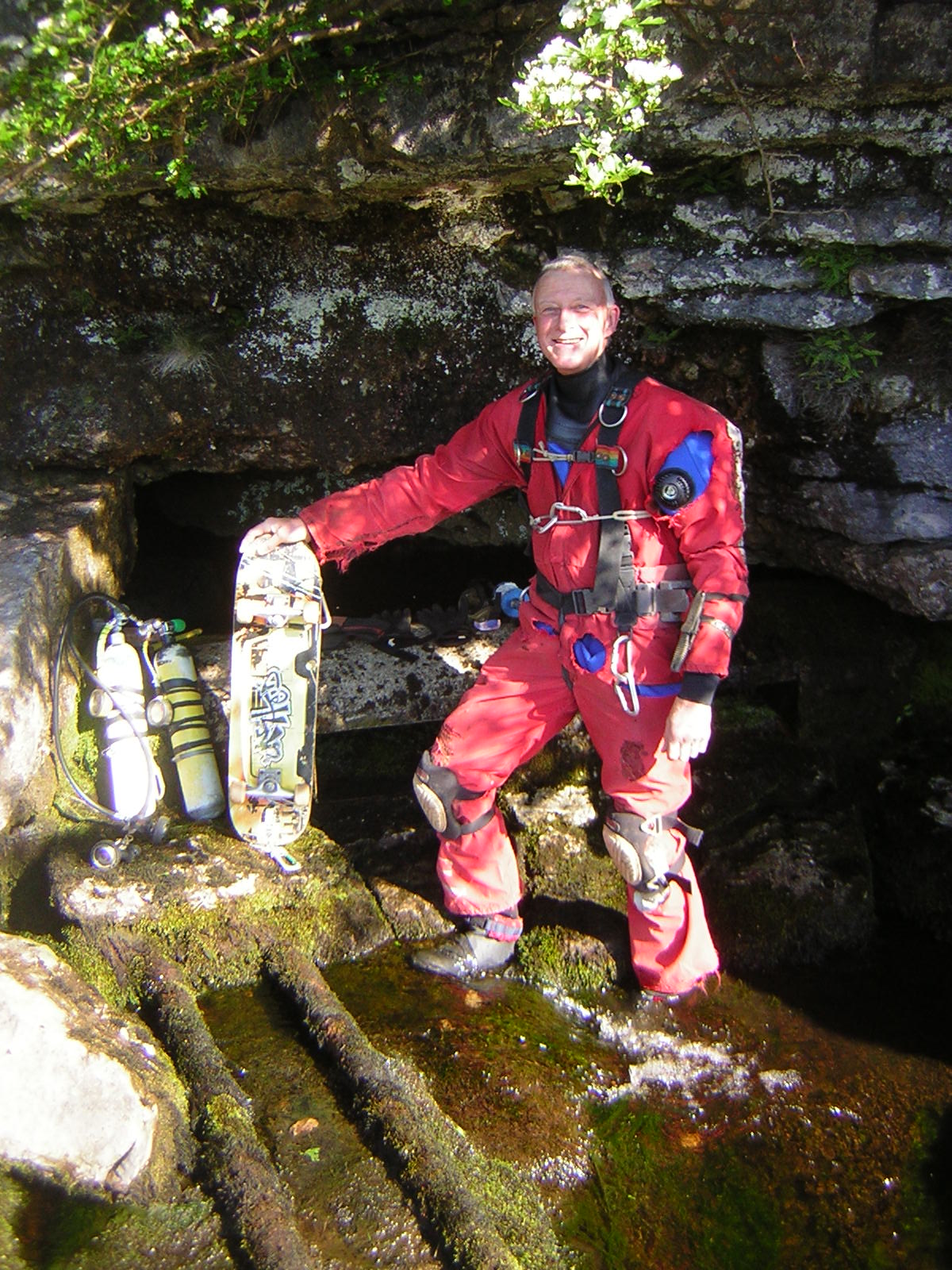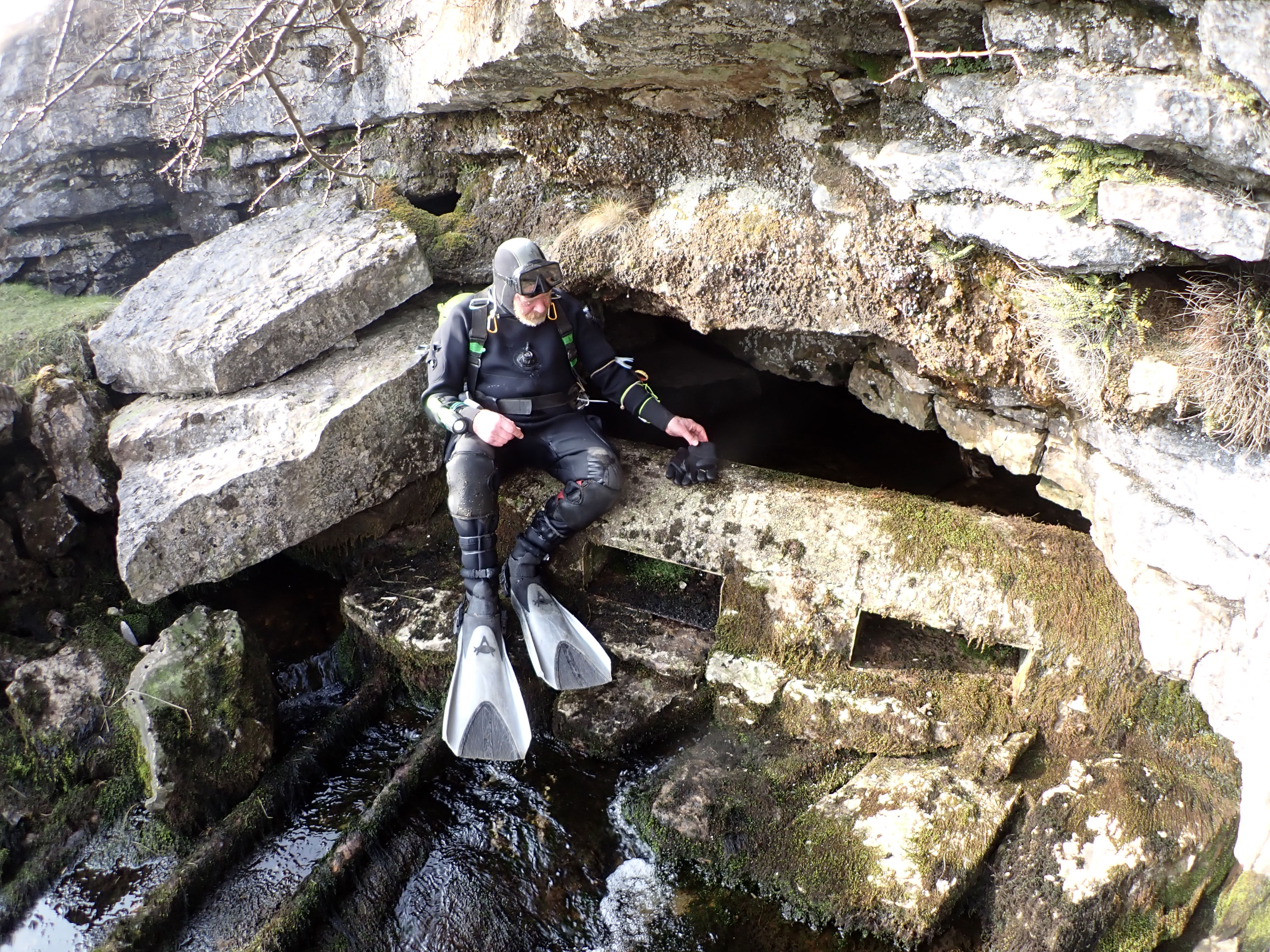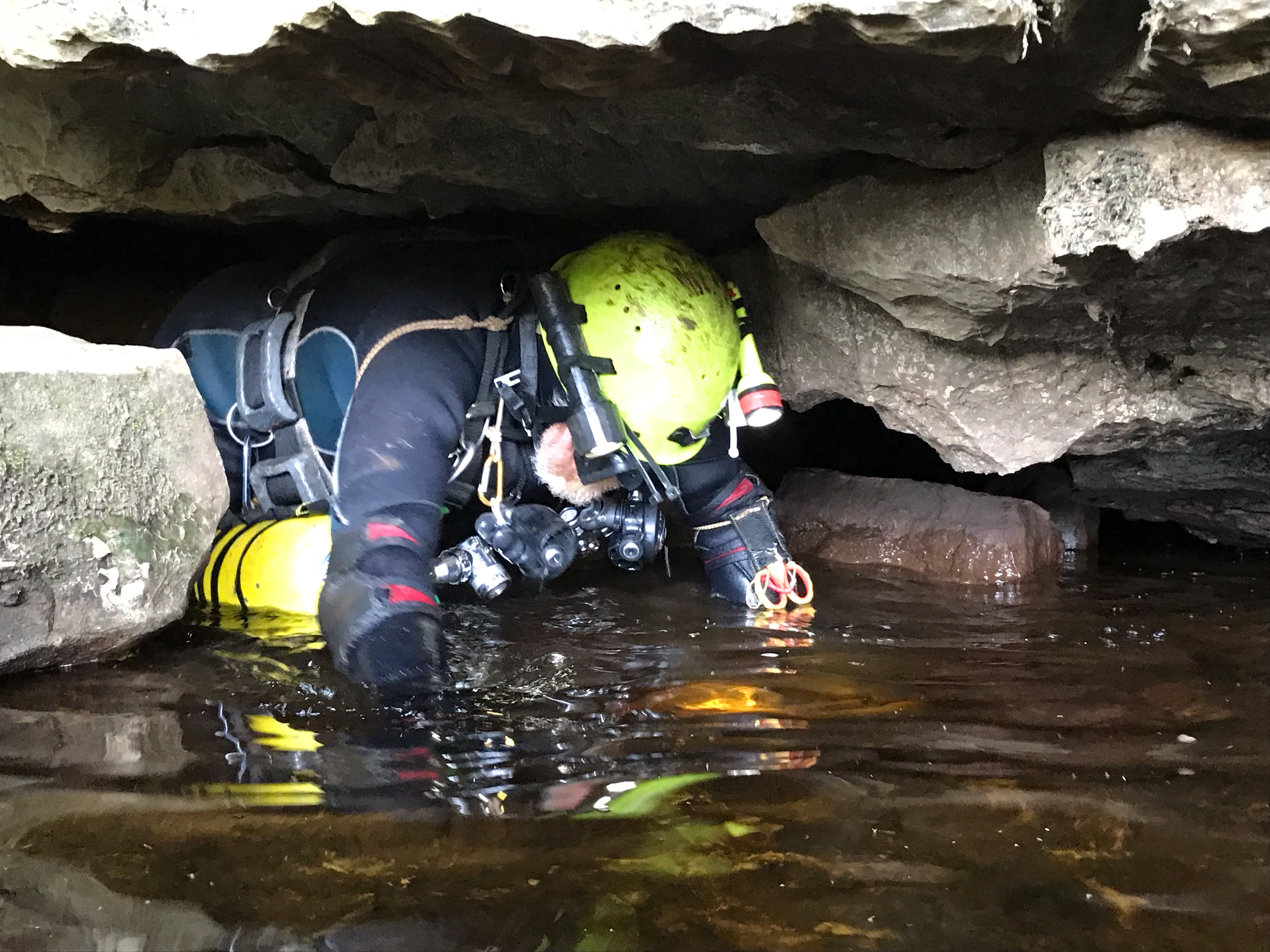By John Cordingley
Some time in 1965 Mick Ormerod and Mick Melvin had wandered up to Austwick Beck Head with diving gear, to assess the prospects.

They weren’t the first subaquatic cavers to investigate; it had been dived by the legendary Bob Leakey in the previous decade (using a home made regulator and a car battery and headlamp joined by 80 feet of cable!). The two Happy Wanderers divers had a good look but decided to leave it until they had more experience, as the sump looked very low and cluttered with boulders and Bob’s assessment had been discouraging. Other generations tried later on; Mike Boon was there in 1970 but didn’t make significant progress beyond where Leakey got to.
In the early 1980s this obvious resurgence for all the Allotment potholes was on my own radar; a group of us went there but we were repulsed too. I vowed to go back for a better look but the ownership changed and the new incumbent wouldn’t give permission. It festered in my brain until 2021, when it came to our attention that there was a new farmer; we went to see him and, after all those years of waiting, it was game on! In fact he’s been extremely helpful and we’re really grateful.

I dived the known sump but it was static, immature and soon became too small. But all the flowing water was coming out from between large boulders in a different part of the bedding. Thus began a concerted effort with a ratchet winch, to move said boulders aside. After several trips a nice active sump pool was revealed. It was less nice underwater because the sump itself was choked with bag slabs. A lot of digging got me to where there was a thin airspace overhead, after 5 m. It was just possible to get one eyeball out of the water like a periscope and see it carrying on. A bit more slab shifting saw me through into a short canal passage but the way on was underwater. From this point onwards everything has been wide open.
I invited fellow CDG Northern Section member Duncan Smith to share the project and we’ve been diving there ever since, when the visibility has been good enough. It’s one of the slowest clearing dive sites in the Dales and good vis is the exception rather that the rule.
Final preparations before heading into the cave.
The trick is to be ready to pounce when it does come into condition.
A difficult section finally eases 130 m into the sump, then easy swimming reaches a junction 197 m from base. To the left is Gothic Passage, currently 168 m long and heading first west then more northerly. It passes close to a 60 m diameter sediment filled (i.e. pre-glacial) shakehole around 100 m away. This is likely to have old, dry passages below it, so we may surface soon. The other way on (known as the Original Route) has been followed up a shaft, along a fine tubular section, to a series of small pots descending to 10 m depth. Just past here a sandbank across the passage stopped play at 425 m from base. We need to re-check this area as there is likely to be an alternative way on. The overall length of the cave is currently 723 m (mid March 2025).
On one of the dives I was surveying back out when I suddenly encountered a gigantic white eel, staring at me. It was massive; I’d have struggled to get both hands right around it. I looked at it for a while and it glared back, lazily irrigating its gills as if to say “I’ve got all the time in the world, pal!”. There was a bit of a stand off then, happily, I won the staring battle and it shifted sideways. I saw my chance and scuttled past the brute, sharpish. We first referred to it as “Eric the eel” but maybe it should have been Erica? However, eels are sexless until they’ve returned to the Sargasso Sea to breed. So we decided we’d call it “Eric(a)” to be on the safe side. Don’t ask me what pronoun to use. We’ve never seen it since then; it’s still lurking in there, somewhere.
 Duncan returns to the welcome sunshine after a long dive.
Duncan returns to the welcome sunshine after a long dive.
Six decades ago, in the Wanderers’ heyday, there were so many open dive sites in the Dales. I don’t blame Mick and Mick for deciding to use their air in other underwater caves, back in the 1960s. But time moves on, many of the open sumps in the Dales have been well explored now, so to break new ground you have to be much more determined. I bet Jim Cunningham never envisaged the teenager he kindly introduced to caving would one day be wrestling underwater boulders and deviating around sump monsters to get back out! But that’s where it all started for me, when Jim kindly oversaw our earliest caving adventures.
John Cordingley
